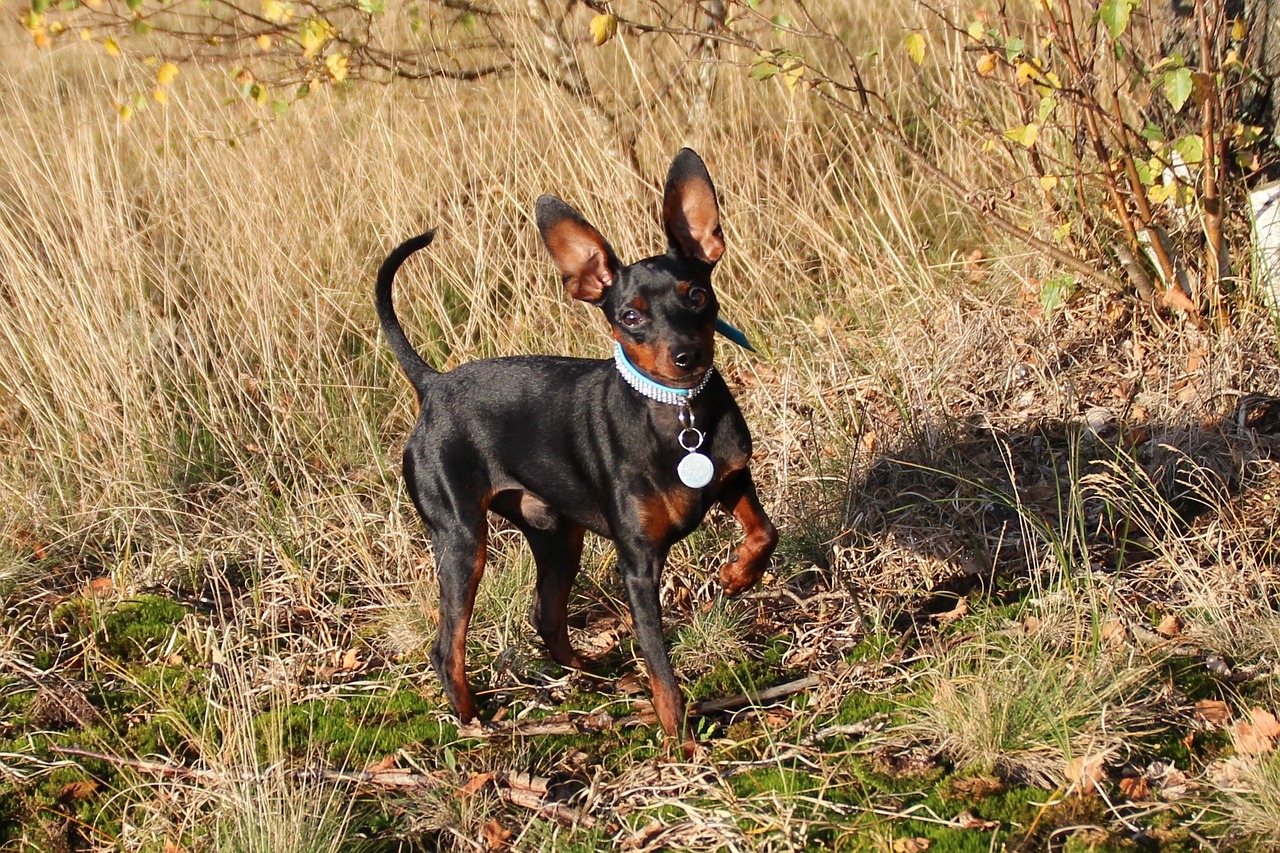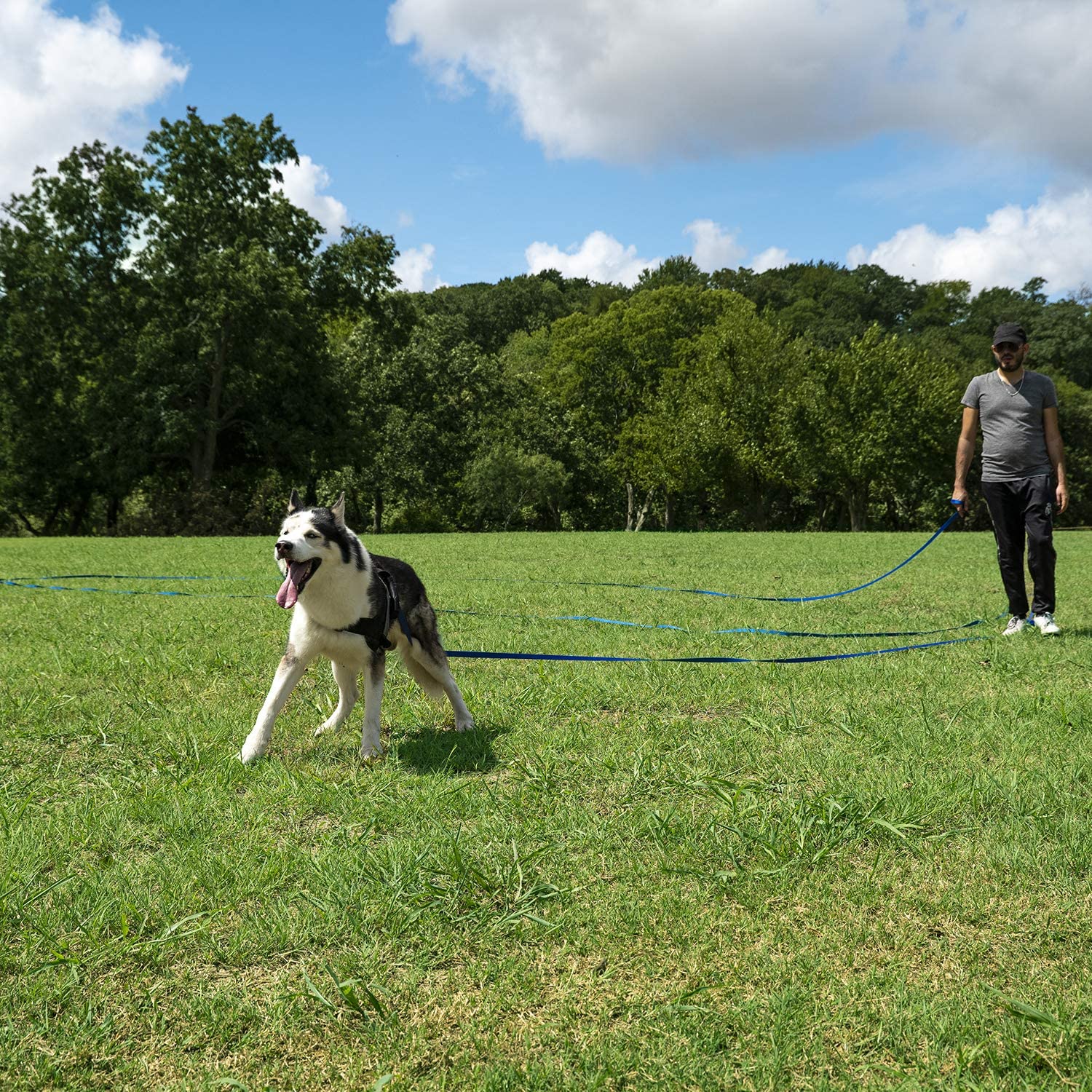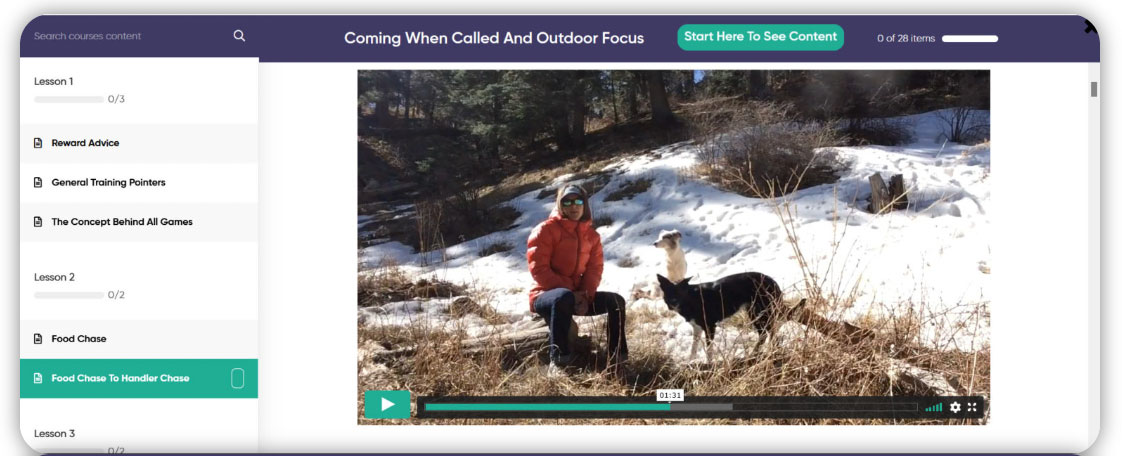
Training your miniature pinscher to come when called is an essential skill that every responsible dog owner should teach their furry friend. Not only does it provide a sense of security when walking your dog off-leash, but it also strengthens the bond between you and your pet. However, training a miniature pinscher can be challenging due to their stubborn and independent nature.
In this article, we will provide you with tips and tricks on how to effectively train your miniature pinscher to come when called, as well as common mistakes to avoid during the process.
Note: For a complete training, we highly recommend this SpiritDog Online Training Course “Coming When Called”.
1. Start with a Strong Foundation
Before you begin training your miniature pinscher to come when called, it’s crucial to establish a strong bond with your pet. Spend time playing with your dog, engaging in activities they enjoy, and providing positive reinforcement through praise and treats. Building trust and a strong connection with your miniature pinscher will make them more likely to respond positively to your commands.
2. Choose a Distinct Command Word
Select a specific word or phrase for the recall command, such as “come” or “here.” Ensure that the command is distinct from other commands you use and that all family members use the same word consistently. Consistency is critical to avoid confusing your miniature pinscher and ensuring that they understand what you expect from them.
3. Begin Training Your Miniature Pinscher in a Controlled Environment
Start training your miniature pinscher to come when called in a controlled, distraction-free environment like your home or a fenced yard. In the early stages of training, it’s essential to minimize distractions to help your dog focus on learning the new command. As your dog becomes more reliable in responding to the recall command, gradually introduce distractions and practice in various environments.
4. Use Positive Reinforcement with Your Miniature Pinscher
When training your miniature pinscher to come when called, always use positive reinforcement techniques. Reward your pup with praise, treats, or playtime when they respond to your recall command. This will help create a positive association with the command and motivate your dog to respond consistently. Remember to be patient and consistent in your training, as it may take time for your dog to master the recall command.
If you’re using treats, these are currently the most popular training treats on Amazon.
5. Gradually Increase Distance and Distractions
As your miniature pinscher becomes more reliable in responding to the recall command in a controlled environment, begin to increase the distance between you and your dog during training sessions. Practice calling your dog from various distances and gradually introduce distractions, such as other dogs, people, or toys. This will help your dog learn to respond to the command even in challenging situations.
6. Make Yourself Interesting and Rewarding to Your Miniature Pinscher
To encourage your miniature pinscher to come when called, make yourself more appealing and rewarding to your dog. Use an enthusiastic, high-pitched voice when calling your dog, and reward them with a treat or praise when they respond. You can also try running away from your dog when calling them, as this can entice your dog to chase after you and respond to the recall command.
7. Never Punish Your Miniature Pinscher for Coming When Called
It’s essential to avoid punishing your miniature pinscher if they do not immediately respond to the recall command or if they come to you slowly. Punishing your dog can create a negative association with the command and make them less likely to respond in the future. Instead, be patient and continue to practice and reinforce the command using positive reinforcement techniques.
8. Practice the Recall Command Regularly with Your Miniature Pinscher
Consistent practice is crucial for training your miniature pinscher to come when called. Incorporate recall training into your dog’s daily routine, and practice the command in various environments and situations. This will help reinforce the behavior and make it more reliable over time.
9. Use a Long Training Leash on Your Miniature Pinscher
When transitioning from a controlled environment to a more open space, consider using a long training leash to maintain control over your miniature pinscher while they learn to respond to the recall command. This will help you avoid losing control of your dog and provide a safety measure as you gradually increase the distance and distractions during training sessions.
This is the most popular long training leash on Amazon.
10. Be Patient and Persistent with Your Miniature Pinscher
Training your miniature pinscher to come when called takes time, patience, and persistence. Some dogs may learn the command quickly, while others may require more time and consistent practice. Be patient with your dog and maintain a positive attitude during training sessions. Remember that every dog is unique, and the key to success is consistent practice and positive reinforcement.
11. Use a Professional Online Miniature Pinscher Training Course
While this article provides many helpful tips for training your miniature pinscher, you can increase your chances of success by enlisting the help of a professional online dog trainer. We love the SpiritDog online courses, since its includes unlimited questions with a real dog trainer.
You can check out their Teach Your Miniature Pinscher to Come Online Course Here
In conclusion, training your miniature pinscher to come when called is an important skill that requires patience, consistency, and positive reinforcement. It may take some time, but with the right approach, your furry friend will learn to respond to your commands and come running to you whenever you call. Remember to keep training sessions short and frequent, and avoid punishing your dog for not obeying. Instead, reward good behavior and make training a positive experience for both you and your pet. By following these tips and being persistent, you can successfully train your miniature pinscher to come when called and enjoy a happy and fulfilling relationship with your furry friend.
More Frequently Asked Questions For Training Your Miniature Pinscher
1. How do I teach my miniature pinscher to come when called?
Teaching your miniature pinscher to come when called is a vital skill that every responsible dog owner should teach their furry friend. Here are some tips on how to train your miniature pinscher to come when called:
Start training indoors: Begin training your miniature pinscher in a quiet and familiar indoor environment. Choose a location with minimal distractions such as the living room or bedroom.
Use positive reinforcement: Reward your dog with praise, treats, or a favorite toy every time they respond to your call. Positive reinforcement encourages good behavior and strengthens the bond between you and your furry friend.
Use a consistent command: Choose a simple and easy-to-remember command such as “come” or “here.” Use this command every time you call your dog.
Make it fun: Incorporate fun and engaging activities into your training sessions. For example, you can play fetch with your dog or use a long leash to practice calling your dog from a distance.
Avoid punishment: Never punish your dog for not responding to your call. Punishment can damage the trust between you and your furry friend and make training more challenging.
Practice regularly: Practice calling your dog from different locations and in different situations. Gradually increase the distance and duration of your training sessions as your dog becomes more proficient.
2. How can I stop my miniature pinscher from barking excessively?
Miniature pinschers are known for their tendency to bark excessively, which can be a nuisance to both you and your neighbors. Here are some tips on how to reduce excessive barking in your miniature pinscher:
Identify the cause: Determine the reason behind your dog’s excessive barking. Is it due to boredom, anxiety, or a response to external stimuli such as noise or other animals?
Provide mental stimulation: Provide your dog with plenty of mental stimulation through interactive toys, puzzle games, and regular exercise. Mental stimulation can reduce boredom and anxiety, which can lead to excessive barking.
Teach the “quiet” command: Teach your dog the “quiet” command and reward them with treats or praise when they stop barking on command.
Avoid reinforcing bad behavior: Refrain from rewarding your dog’s barking behavior, as this can reinforce the behavior and make it more challenging to break.
Use positive reinforcement: Reward your dog with praise, treats, or a favorite toy when they are quiet and calm. Positive reinforcement encourages good behavior and can help reduce excessive barking.
Consider professional training: If your dog’s barking persists despite your best efforts, consider enrolling them in professional training to address the issue.
3. How can I prevent my miniature pinscher from biting?
Preventing your miniature pinscher from biting is crucial, as it can cause injury to both you and others. Here are some tips on how to prevent your miniature pinscher from biting:
Socialize your dog: Socialize your dog with people and other animals from an early age. This can help your dog learn appropriate behavior and reduce the likelihood of biting.
Train your dog: Train your dog to obey basic commands such as “sit,” “stay,” and “leave it.” This can help your dog understand what behavior is acceptable and what is not.
Provide appropriate outlets for chewing: Provide your dog with appropriate toys and chews to prevent them from chewing on inappropriate items such as furniture or shoes.
4. What’s the best online course for teaching a miniature pinscher to come when called? At iHeartDogs, we recommend the SpiritDog online course “Coming When Called.” The course includes unlimited questions with a real dog trainer.
iHeartDogs is reader supported. Our articles contain affiliate links where we are paid a small commission for linking to a product at no additional cost to the reader.



 Toledo, United States.
Toledo, United States.